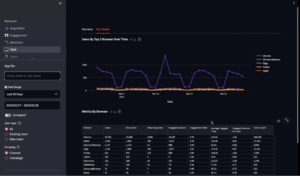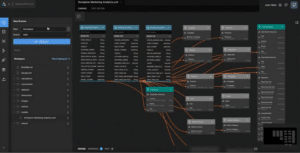As the digital landscape evolves, so do the strategies and technologies that drive it. At the 2024 Semantic Layer Summit, we were thrilled to have John Reid, Senior Product Manager at Snowplow Analytics, discuss “How Snowplow is Modernizing Digital Analytics with a Warehouse-Centric Strategy.” This session provided a deep dive into how Snowplow is transforming digital analytics, addressing current challenges, and pioneering new approaches. We hope other companies can learn from Snowplow’s approach and see the value of incorporating a semantic layer.
Introducing Snowplow Analytics
John Reid started his presentation with a brief introduction to Snowplow, the leader in next-generation customer data infrastructure (CDI) that has become a staple for tracking user activity across websites and mobile apps. Snowplow can collect rich, granular first-party data through various SDKs for web, mobile, and server environments. These SDKs send events to a real-time streaming pipeline for data validation and enrichment before storing the data in a warehouse or lakehouse. From there, Snowplow’s packaged dbt models help transform raw event data into actionable tables to streamline visualizations, decisions, and activation in downstream platforms.

Addressing Key Challenges in Digital Analytics
One of the primary challenges data teams face today is the impending deprecation of Google Analytics Universal Analytics in July 2024. Teams must decide whether to upgrade to GA4 or explore alternative solutions. Many have found GA4 plagued with bugs, cardinality problems, and opaque metric calculations. Moreover, GA4 locks users into the Google ecosystem, offering limited export options and real-time capabilities. Privacy and compliance concerns have further complicated its adoption, leading to bans in several European jurisdictions.
Snowplow’s Innovative Solution
In response to these challenges, Snowplow is pioneering a warehouse-centric approach emphasizing collecting compliant first-party data. Instead of relying on third-party services, Snowplow enables businesses to collect data within their environments, respecting user privacy and consent. This approach aligns with the growing trend of data gravity in the warehouse and lakehouse, where all data is centralized into a single source of truth subjected to rigorous data quality and governance processes. Leading companies are increasingly investing in real-time capabilities for applications such as fraud detection, churn prevention, and personalized user experiences.
Warehouse-Native Digital Analytics
John introduced the concept of warehouse-native digital analytics, facilitated through Snowplow’s interactive data apps. These self-service analytics tools allow technical and non-technical users to explore the data they collect. Snowplow’s user and marketing analytics data app is designed to replicate GA’s familiar metrics but is based on Snowplow’s robust tracking and data models in a “glass-box” fashion. This ensures all data is available in the organization’s warehouse, providing a secure, transparent, and scalable solution.
Demonstrating Snowplow’s Data Application
During the session, John demonstrated Snowplow’s data application within the Snowplow Console. This application provides an overview of key marketing metrics, user engagement, conversion events, and technology usage. Users can delve deeper into the data to identify trends and insights, such as popular content, user retention rates, and device usage. This tool is powered by Snowplow’s standard web and mobile tracking and unified data model, providing comprehensive and actionable insights for marketing, product, and other non-technical teams.

Enhancing Data Exploration with the AtScale Semantic Layer
John also showcased how Snowplow’s data can be explored through a semantic layer, particularly with AtScale’s semantic model. This integration allows users to perform self-service analytics in tools like Tableau and Excel without needing extensive knowledge of the underlying data collection or modeling processes. The semantic layer bridges the gap between raw data and business insights, enabling users to analyze data using familiar interfaces and advanced visualization techniques.

Getting Started with Snowplow and AtScale in your tools of choice
To illustrate the ease of use, John walked through how to explore Snowplow data via the semantic layer in Tableau and Excel. He demonstrated how non-technical users can slice and dice data using a point-and-click interface, providing valuable insights without deep technical knowledge. This seamless integration showcases the power of combining Snowplow’s robust data collection capabilities with AtScale’s versatile semantic layer. Watch the demo now!
Conclusion
In collaboration with AtScale, Snowplow is revolutionizing digital analytics with its warehouse-centric strategy. Snowplow offers a robust and compliant alternative to traditional, packaged analytics platforms by focusing on first-party data collection, real-time capabilities, and self-service analytics. The session at the Semantic Layer Summit highlighted the potential of this approach to transform how businesses understand and act on their data.
We extend our gratitude to John Reid for his enlightening session and to all participants of the Semantic Layer Summit. For more information, watch the entire session on-demand and explore our free Developer Edition.


SHARE
Case Study: Vodafone Portugal Modernizes Data Analytics